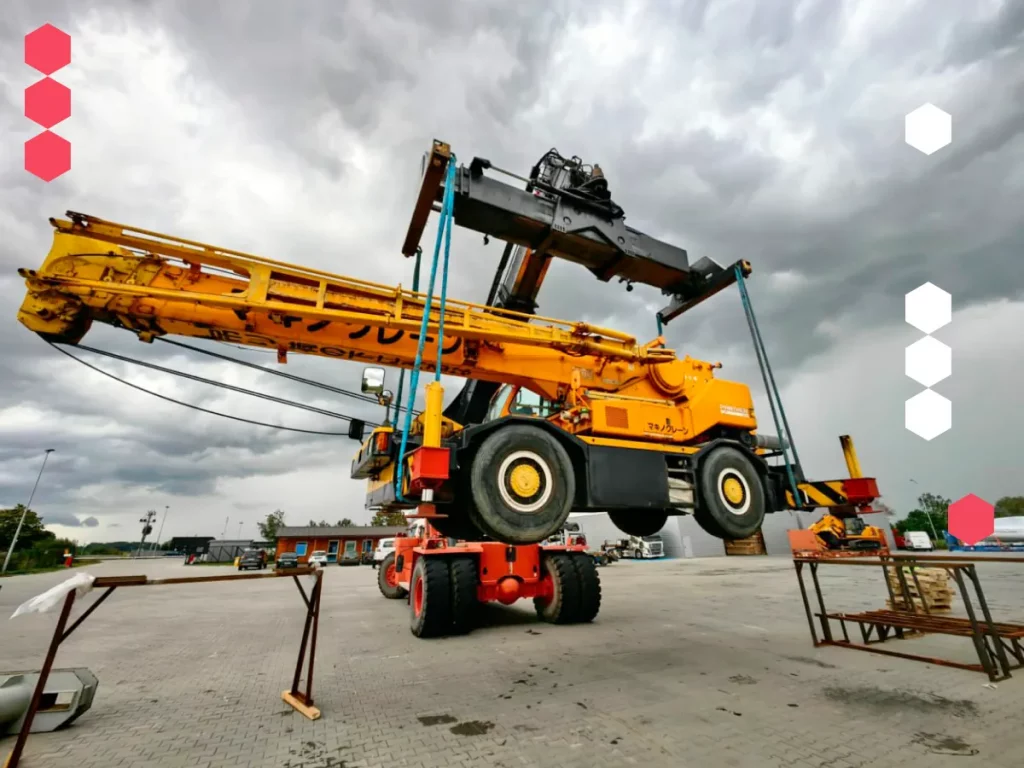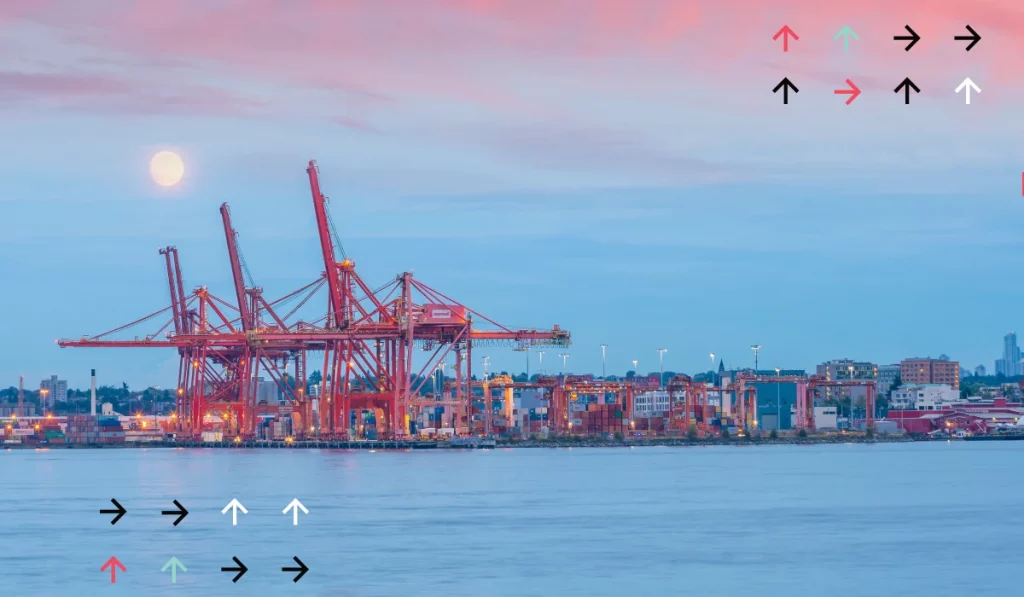Ro-Ro or Lo-Lo: Which Method is Best for Different Types of Vehicle Transport

In international logistics, vehicle transportation plays a crucial role, and choosing the right shipping method affects both delivery time and cost. This article will be useful for logisticians, maritime transport specialists, and business owners interested in learning more about maritime vehicle transportation. We will discuss two key loading methods—Ro-Ro and Lo-Lo—their features, advantages, and drawbacks. You will learn which method is best suited for specific types of vehicle transport and which factors influence the choice of delivery method.
Table of Contents:
- Features of Maritime Vehicle Transport
- What Types of Ships Are Used for Vehicle Shipping?
- What Is Ro-Ro and How Does Roll-On/Roll-Off Shipping Work?
- Lo-Lo: How Lift-On/Lift-Off Loading Works
- Our Experience in Vehicle Transport by Sea
- SYNEX Logistics – Experts in Shipping High-Value and Complex Cargo
- Conclusion
Features of Maritime Vehicle Transport
Maritime transportation is an economical way to deliver cars, trucks, special machinery, and other wheeled vehicles over long distances, especially for international shipments. This method is popular among car dealers and trading companies due to the ability to transport a large number of vehicles at once.
Before shipment, vehicles are cleaned of dirt, fuel is drained, all fluids are checked, and the battery along with the anti-theft system is disconnected. Cars are placed in parking mode or secured with the handbrake, and to prevent shifting on the vessel, they are fastened with straps and chocks to prevent shifting. If the vehicle is non-operational, special equipment is used for loading.
Choosing a reliable transport company is crucial: professional logisticians will help plan the route and prepare all necessary documents—waybills, contracts, permits, and cargo insurance policies—to ensure the vehicle’s safety during transit.
What Types of Ships Are Used for Vehicle Shipping?
Several types of ships are used for maritime vehicle transportation, with the choice depends on the type of cargo, distance, and specific route conditions.
Ro-Ro (Roll-on/Roll-off) vessels – designed for transporting wheeled vehicles.
Car carriers (PCC/PCTC – Pure Car Carrier/Pure Car and Truck Carrier) – specialized ships equipped with multi-level decks for mass transportation of cars.
Container ships – transport containers that hold vehicles. This method is most commonly used for individually shipped or luxury vehicles that require additional protection.
Lo-Lo (Lift-on/Lift-off) vessels – cargo ships equipped with cranes to lift and lower vehicles onto the deck.
What Is Ro-Ro and How Does Roll-On/Roll-Off Shipping Work?
Ro-Ro (Roll-on/Roll-off “rolling on and rolling off”) is a maritime shipping method where vehicles drive onto the ship using ramps and are secured on the deck to prevent movement. Cargo is arranged in rows based on size and volume, optimizing space usage, accelerating logistics processes, and reducing costs.
Ro-Ro shipping is ideal for transporting large and non-standard cargo, such as cars, buses, trailers, agricultural, construction, and special equipment. It eliminates the need for containers and heavy lifting equipment, reducing expenses. Ro-Ro vessels are highly sought after in international logistics due to their ability to transport large volumes of vehicles quickly, efficiently, and at a lower cost compared to container shipping.
Advantages and Disadvantages of Ro-Ro Shipping
Ro-Ro shipping has numerous advantages, but also some limitations that must be considered when choosing this transportation method.
Advantages:
- Speed. Ro-Ro vessels achieve high speeds, significantly reducing delivery time and making them ideal for urgent shipments.
- Convenience. The absence of the need for additional lifting equipment simplifies and accelerates the loading and unloading of vehicles.
- Flexibility. Spacious decks allow for the transportation of even heavy and oversized cargo, including trucks and specialized machinery.
- Cost-effectiveness. It requires less handling time and eliminates the need for containers, reducing overall logistics costs.
Disadvantages:
- Limited routes. Ro-Ro vessels operate only on established routes, which complicates the delivery of cargo to regions without direct sea access.
- Risk of damage. During loading and unloading, vehicles may sustain scratches, dents, or other damage due to onboard maneuvers or improper securing. If transported on an open deck, exposure to sunlight, wind, and precipitation may accelerate deterioration.
- High port infrastructure requirements. Ro-Ro vessels require specialized port infrastructure, including ramps and designated loading areas, which are not available in all ports.
When Is Ro-Ro the Best Choice?
Ro-Ro transport is most suitable when the wheeled vehicles need to be delivered quickly and cost-effectively over long distances between ports. This method is particularly efficient for regular shipments, where rapid loading and unloading are essential, as well as for reducing containerization costs, packaging, and additional equipment. Ro-Ro is also advantageous for bulk shipments, where containerized transport would be less economical or practical.
Lo-Lo: How Lift-On/Lift-Off Loading Works
Lo-Lo (Lift-On/Lift-Off “loading and unloading”) is a type of cargo vessel equipped with onboard cranes for loading and unloading without the need for external lifting mechanisms. However, in some cases, dockside cranes are also used, as they may be more powerful and faster, expediting the handling of heavy and oversized cargo. Dockside cranes can handle multiple ships at once, reducing the load on onboard mechanisms and saving fuel.

Once loaded, vehicles are securely fixed and placed in designated compartments or container cages to ensure their safety during transport. Lo-Lo ships typically have spacious decks and upper platforms, allowing for the efficient placement, loading, and unloading of various cargo types, maximizing overall transport capacity.
Advantages and Disadvantages of Lo-Lo Shipping
Lo-Lo shipping is a secure and reliable transportation method for vehicles, minimizing the risk of damage due to containerized or specialized packaging. This method is available in most major international ports, making it ideal for long-distance shipping. Lo-Lo is particularly efficient for the transportation of oversized and heavy cargo, as it allows for flexible placement on the vessel and optimal use of space. It is also essential for transporting non-movable cargo, requiring careful lifting and positioning. Additionally, Lo-Lo is suitable for the transportation of out-of-gauge machinery, which demands precise handling during loading and unloading.
In ports lacking the necessary heavy-lifting equipment, onboard cranes become a crucial solution, significantly reducing operational costs. However, Lo-Lo shipping has certain disadvantages. Loading and unloading with cranes take longer, which can cause delays, especially in busy ports. In ports with well-developed infrastructure, ground-based cranes often operate faster than onboard cranes. Furthermore, not all vessels are equipped with the required handling mechanisms, meaning that specialized ships may be necessary for transporting large machinery.
When Is Lo-Lo the Best Option?
Lo-Lo transport is ideal for delivering various types of cargo that cannot move independently or require additional specialized equipment for movement, including:
- Specialized machinery;
- Railway transport;
- Damaged or unfinished vehicles;
- Military equipment;
- Watercraft;
- Oversized structures on chassis.
Lo-Lo shipping is a great choice when vehicles require careful loading, secure fastening on board, and protection from external conditions during transport.
Our Experience in Vehicle Transport by Sea
SYNEX Logistics provides reliable and efficient vehicle transport by sea, leveraging industry-tested logistics strategies and a global partner network. We organize shipments for passenger and commercial vehicles, specialized machinery, and oversized cargo, overseeing the entire process—from cargo consolidation and customs clearance to temporary storage and final delivery.
One of SYNEX Logistics’ successful projects involved transporting a boat from Ukraine to Canada. This case highlights our expertise in managing complex logistics operations and shipping specialized transport over long distances. Thanks to our partnerships with leading shipping lines and our tailored approach, we select the best routes and guarantee cargo safety.

SYNEX Logistics – Experts in Shipping High-Value and Complex Cargo
SYNEX Logistics is a trusted partner in transporting valuable and complex cargo. We specialize in shipping hazardous goods, including ADR materials, which require strict compliance with safety regulations. Additionally, we successfully handle the transportation of high-value and excise goods, ensuring full regulatory compliance and enhanced security.
With deep expertise in EU regulatory frameworks and years of experience handling diverse cargo categories, we solve even the most challenging logistics tasks.
SYNEX Logistics offers expertise, reliability, and a personalized approach to high-value and complex cargo logistics. Contact us to discuss how SYNEX Logistics can help arrange your shipment with maximum security and efficiency.
Conclusion
The choice of a maritime vehicle transport method—Ro-Ro or Lo-Lo—depends on the type of cargo, speed, safety requirements, and port infrastructure. Ro-Ro is ideal for fast and cost-effective transportation of wheeled vehicles, as it allows for quick loading and unloading without additional lifting equipment. Lo-Lo, on the other hand, is used for transporting non-standard or heavy cargo that requires secure fastening and additional protection during shipment. Both methods have their advantages and limitations, and the correct choice depends on the specific transportation conditions, including the nature of the cargo, handling capabilities at ports, and cost-effectiveness for a given logistics route.




